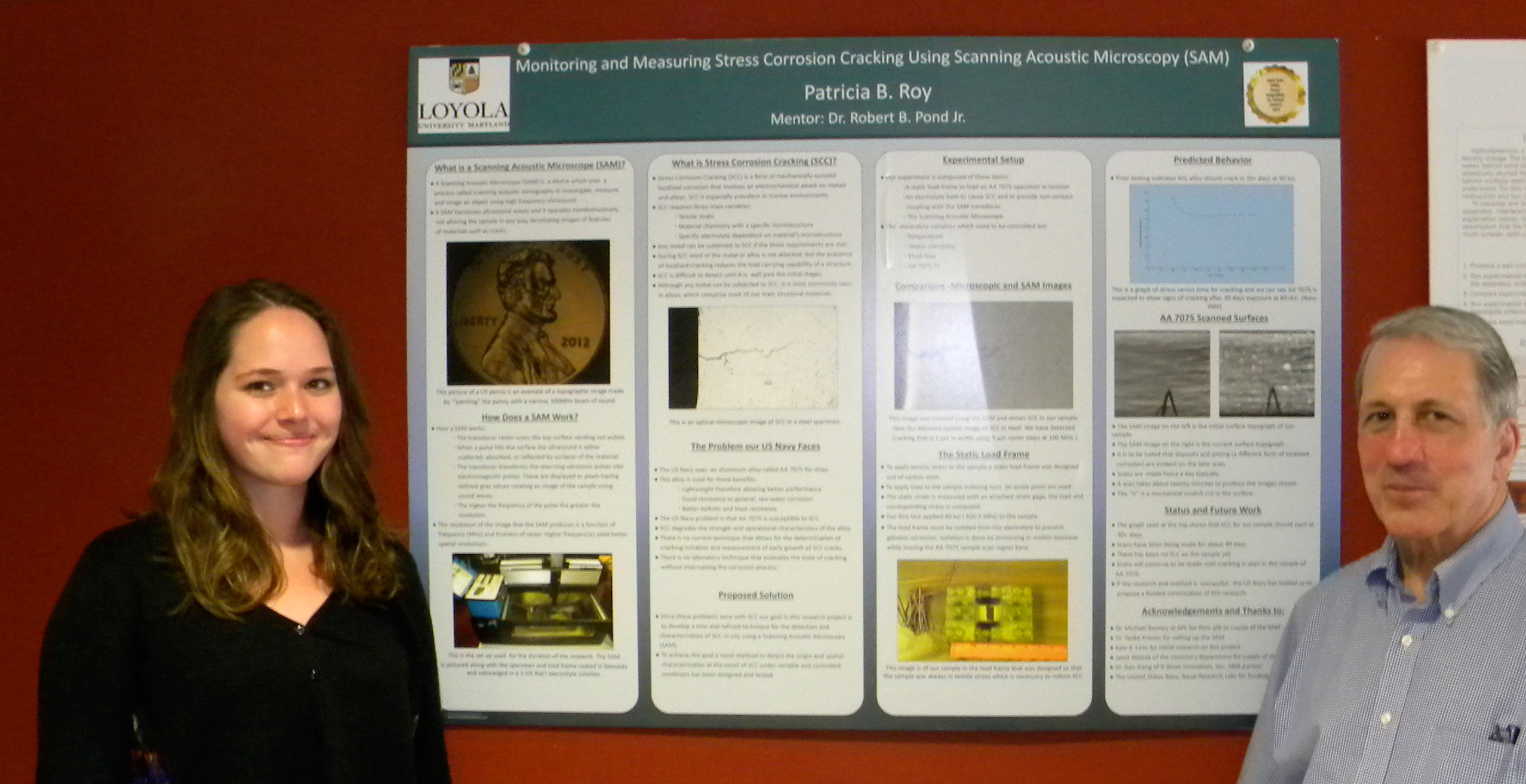Pat Roy
Senior materials engineering student, Patricia Roy has been engaged for more than
two years doing research on the corrosion of alloys. The US Navy funded her first
work on the degree of sensitization of aluminum alloys. Her current research uses
a novel technique to detect and measure stress corrosion cracking (SCC) in a laboratory
environment.  Pat competed in the university’s Undergraduate Research and Scholarship Colloquium
(UGSRC) in April 2013 where she won third prize for her poster, “Monitoring and Measuring
Stress Corrosion Cracking Using Scanning Acoustic Microscopy (SAM).” The novel SAM
technique examines alloy surfaces in a corroding electrolyte using a 100 MHz ultrasonic
beam that is scanned across the specimen yielding a high resolution picture of the
surface. In this way small cracks in the surface are detected and measured as they
grow. Pat plans to attend graduate studies in materials science and engineering.
Pat competed in the university’s Undergraduate Research and Scholarship Colloquium
(UGSRC) in April 2013 where she won third prize for her poster, “Monitoring and Measuring
Stress Corrosion Cracking Using Scanning Acoustic Microscopy (SAM).” The novel SAM
technique examines alloy surfaces in a corroding electrolyte using a 100 MHz ultrasonic
beam that is scanned across the specimen yielding a high resolution picture of the
surface. In this way small cracks in the surface are detected and measured as they
grow. Pat plans to attend graduate studies in materials science and engineering.
Words from Pat:
In the spring of 2012 I was approached by my professor, Dr. Wayne Elban, with the opportunity to give a presentation at the National Educations' Workshop (NEW) in Fort Wayne, Indiana, on November 4-7, 2012. The presentation would describe work I did with three classmates on the special project assigned in Mechanical Properties of Materials (EG 454) class in the fall of 2011. The project involved obtaining a indentation hardness profile across a series of braze joints in a fabricated aluminum part obtained from ALCOA Mill Products, Lancaster, Pennsylvania. I was thrilled to participate in this conference as a rising senior at Loyola University Maryland.
After preparing my presentation with the help of my professor I flew out to Indiana for the workshop. Once in Fort Wayne, I received a schedule of activities for the next three days of the conference. I wanted to make sure I not only took advantage of all of the lectures I could attend, but I also desired to avail myself of the opportunity to network and make connections with professionals whose interest is in materials science. Some of the lectures I was able to attend were: Microcontact Printing in the Classroom, Exploring Glass and Materials Science through Candy and Other Common Materials, and Introduction to Additive Manufacturing. The NEW conference allowed me to be involved in the professional world of materials science and further my education in a unique way, an opportunity that is rare for an undergraduate at any school. I was very thankful to my professor, the department, and Loyola for their support and encouragement and for allowing me this wonderful, eye opening experience.
In addition to preparing the presentation, a paper describing the work has been written and recently accepted for posting on the MatEd Web site.